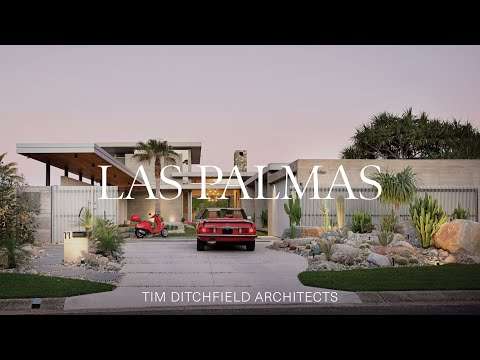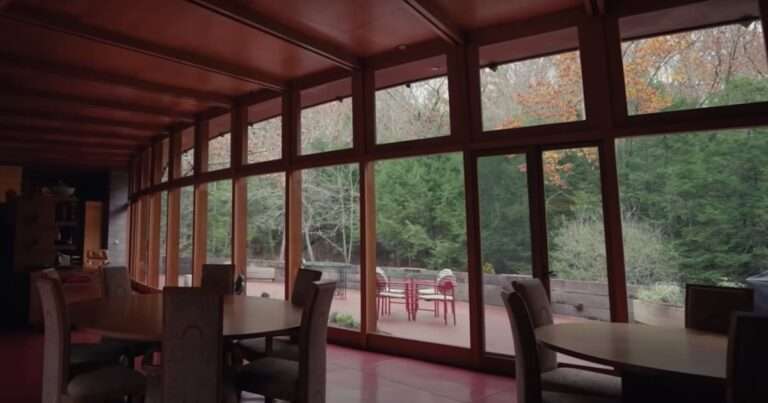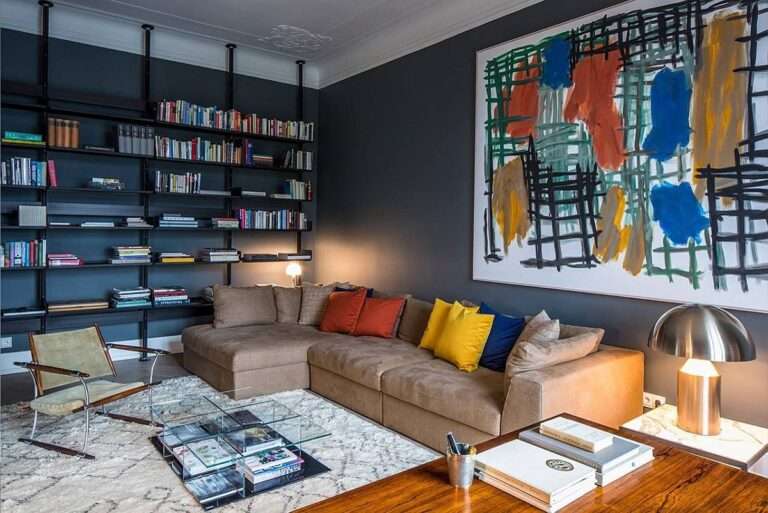Succulent gardens range from large planters filled with selections such as echeveria, to an area of the yard that showcases your favorite succulent varieties. In fact, there are so many different varieties to browse, the possibilities seem endless. Their thick, shiny, water-filled leaves give them an almost unreal appearance, making them popular with design lovers who are drawn to color and form. [photo from Southwest Boulder & Stone]

Not to mention, succulents don’t mind sharing the space with others in planters or the soil, so you can curate a beautiful garden featuring many colors and textures, even if your “garden” is nothing more than a large pot. Keep reading for tips as you plan and plant your very own succulent garden. [unless otherwise indicated, original photos are by Kate Simmons for Decoist]
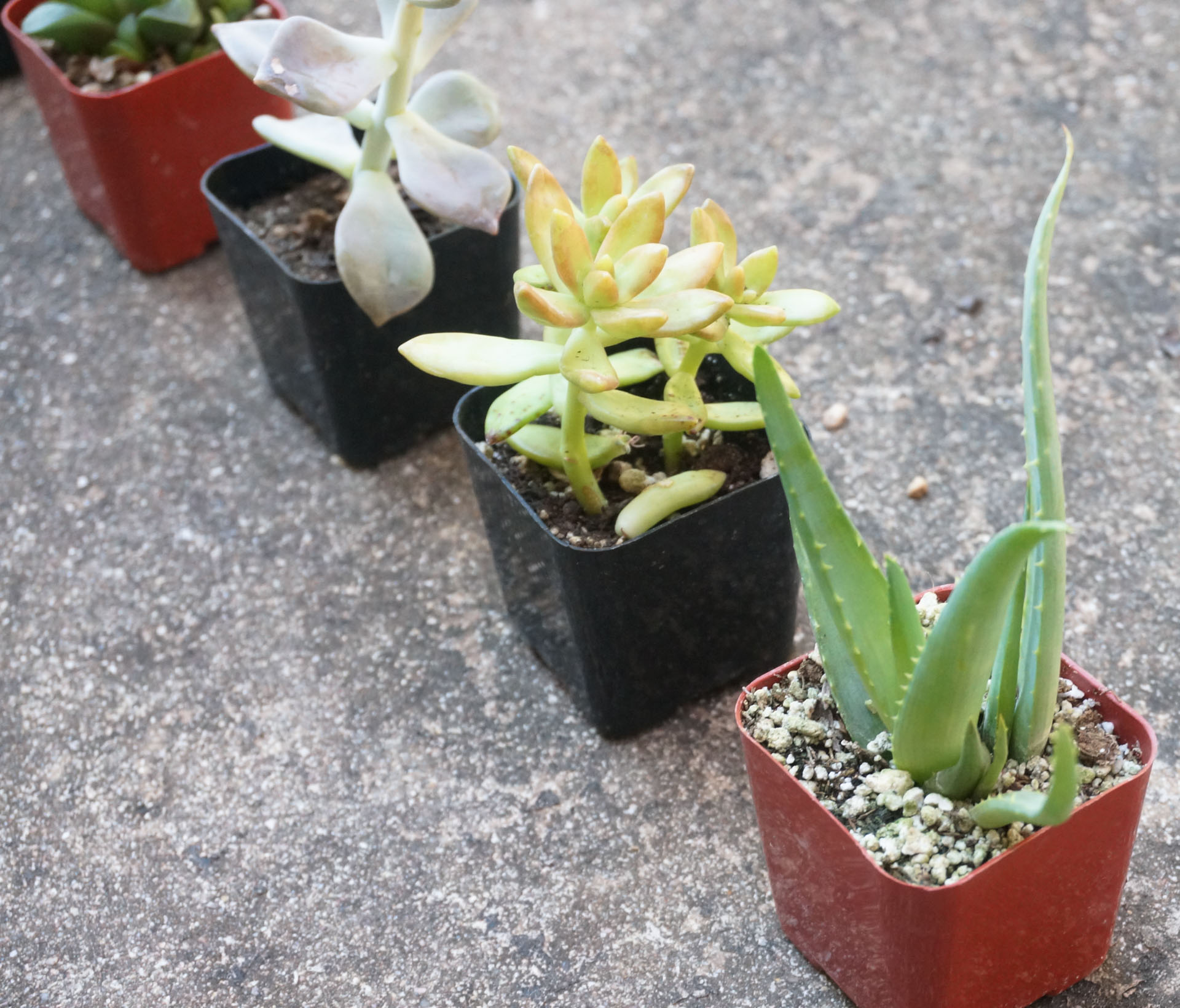

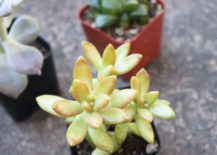
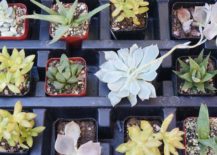
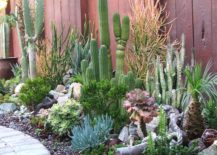
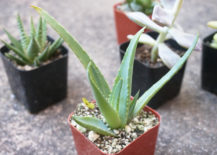
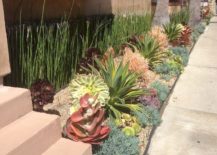
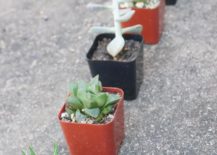
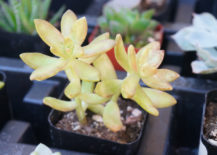
Choosing Your Succulents
Let’s face it: shopping for succulents is fun, fun, fun! It’s easy to rack up a pretty large bill from a cart filled with “little plants”, so choose wisely. While there are no hard-and-fast rules for combining succulents into beautiful arrangements, it’s important to pay attention to a few key factors.
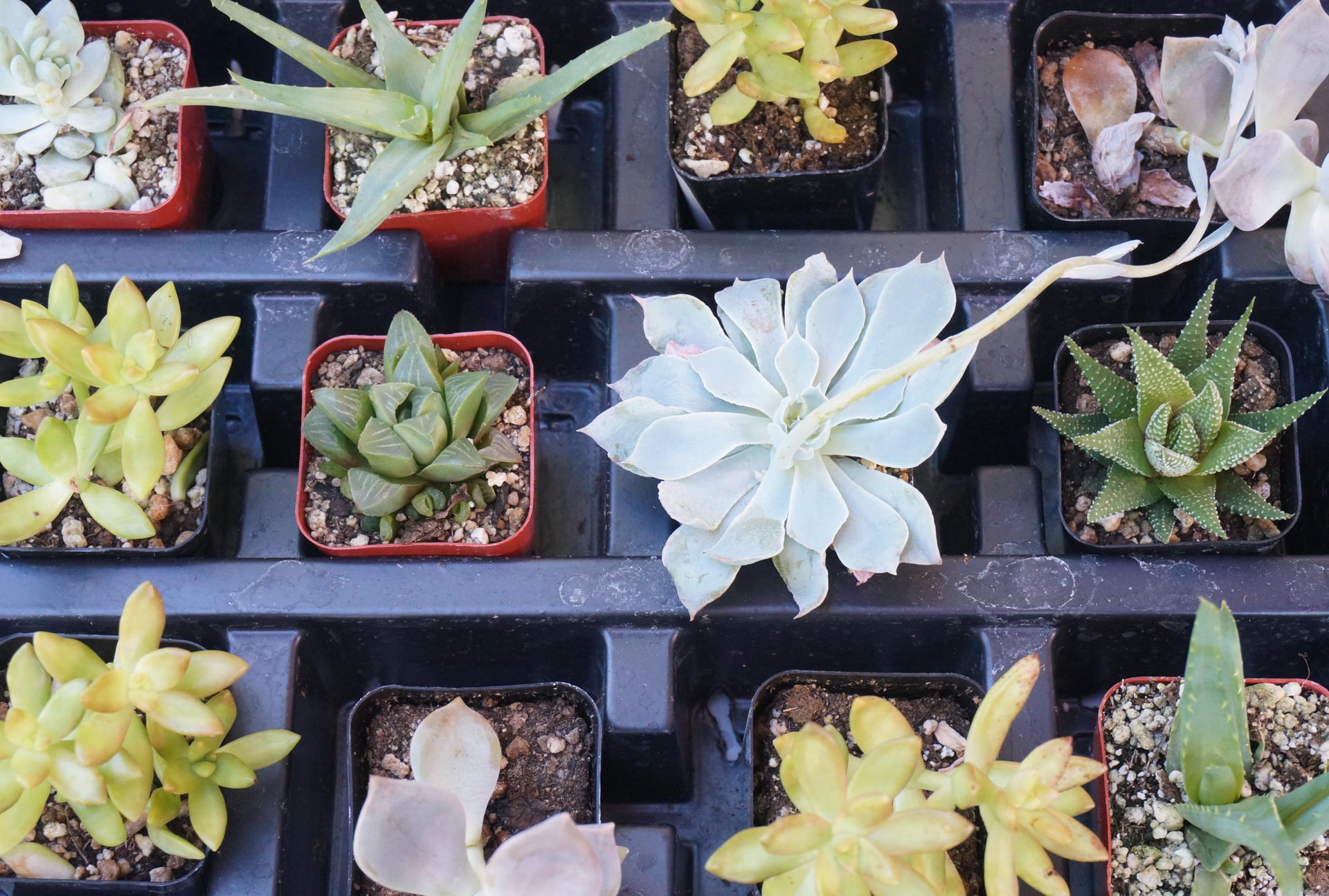
For starters, you will want to note the temperature and level of sun in your garden location. Many succulents do well with a few or more hours of sun per day, but if the temps get very hot, shade will be important (for at least part of the day). Some succulents can get burned from the sun, especially in the heat of summer. In other words, do your research. This can be as simple as speaking with a knowledgeable employee at the nursery when shopping for your succulents.
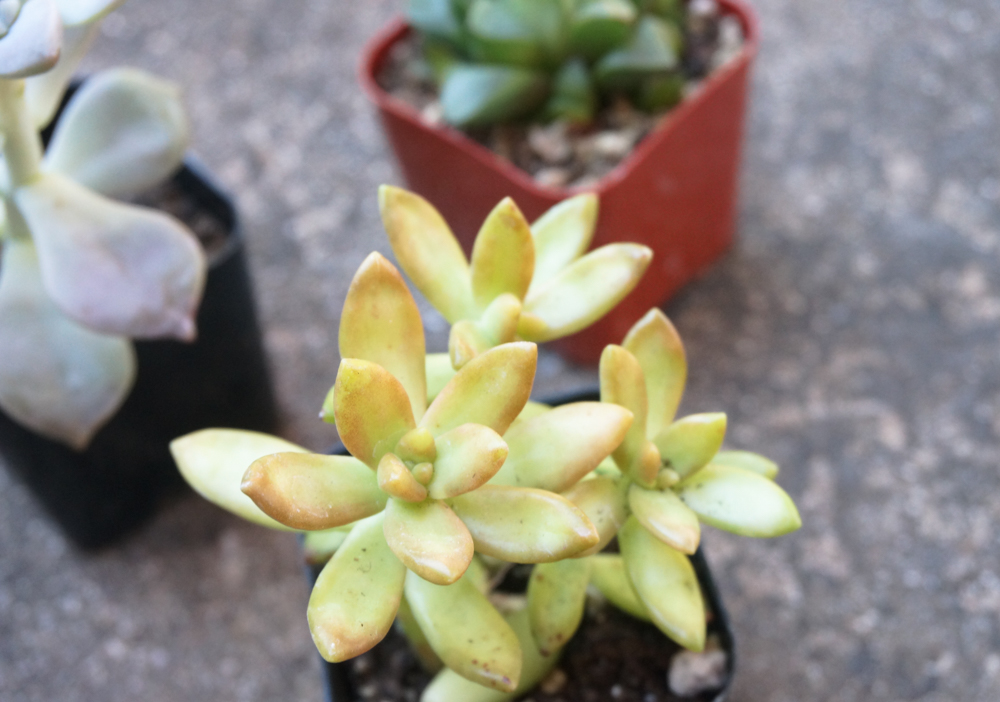
To create interest in your garden, opt for variety. This means choosing an array of colors, textures and heights. While color and texture will be obvious as you shop, you will want to find out if your succulent choices grow upward, outward (ground cover-style), or over the tops of containers. This will help you plan the design of your garden.
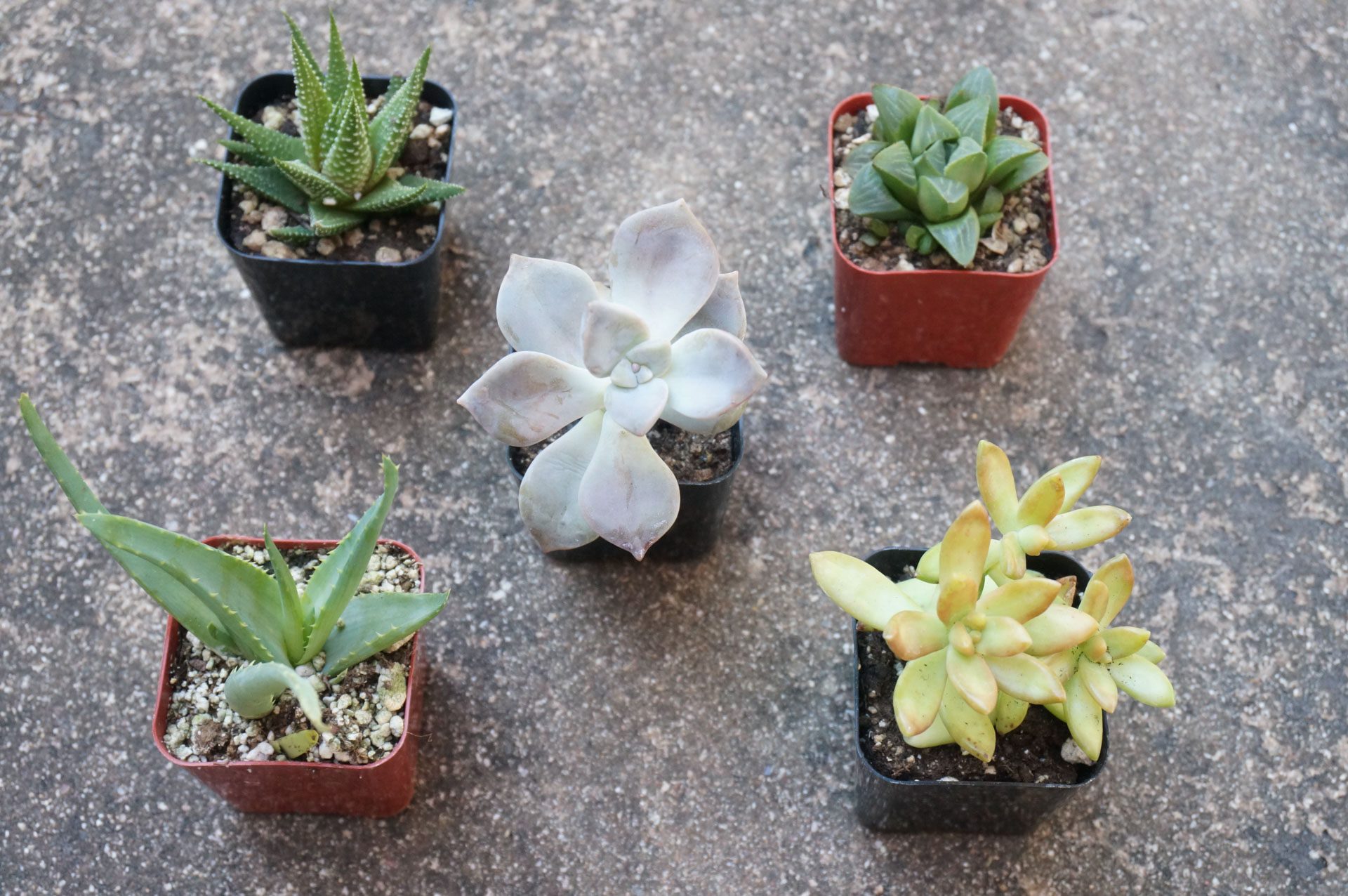
Take a few extra minutes to inspect each plant before you purchase, choosing healthy specimens with good leaf growth.
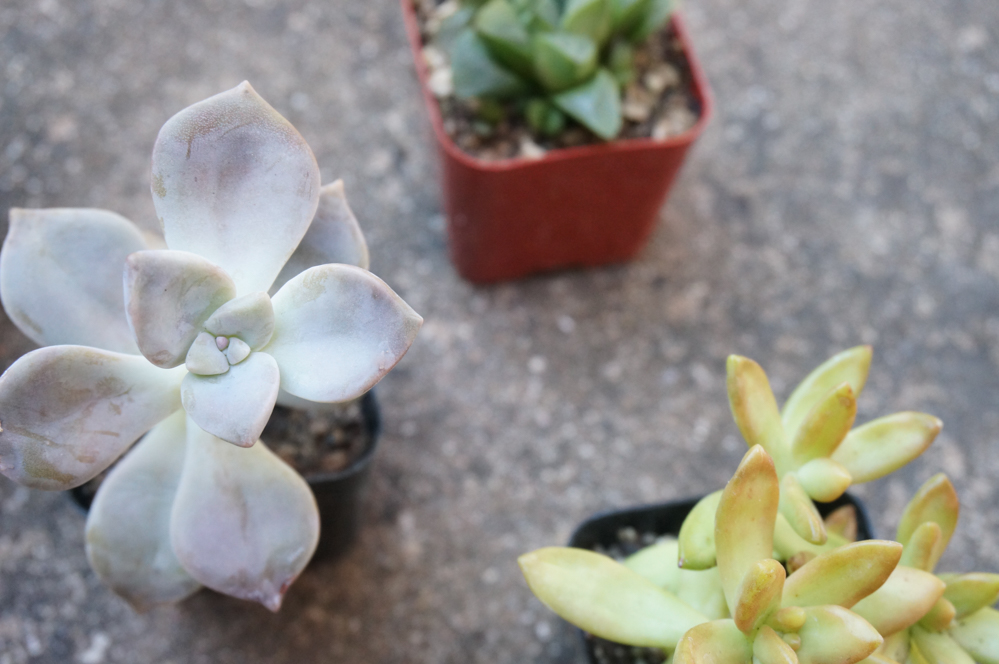
You may also want to pick up some succulent soil, or talk with a nursery employee about ways to make your own soil by adding materials such as coarse sand and pumice to the mix.
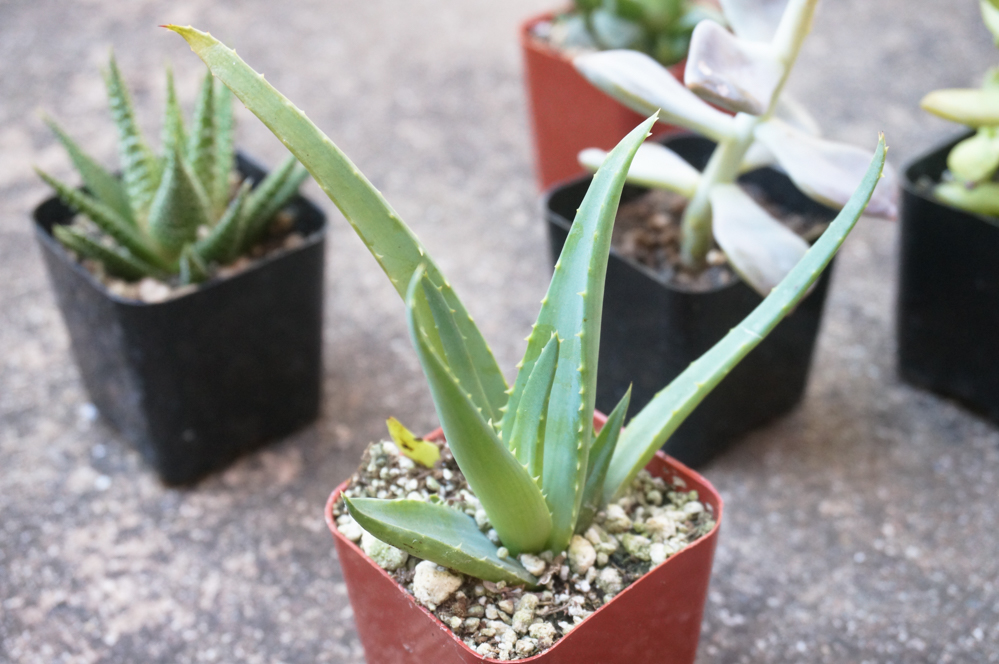
Putting It All Together
Now it’s time to get planting! How satisfying will it be to go from this…
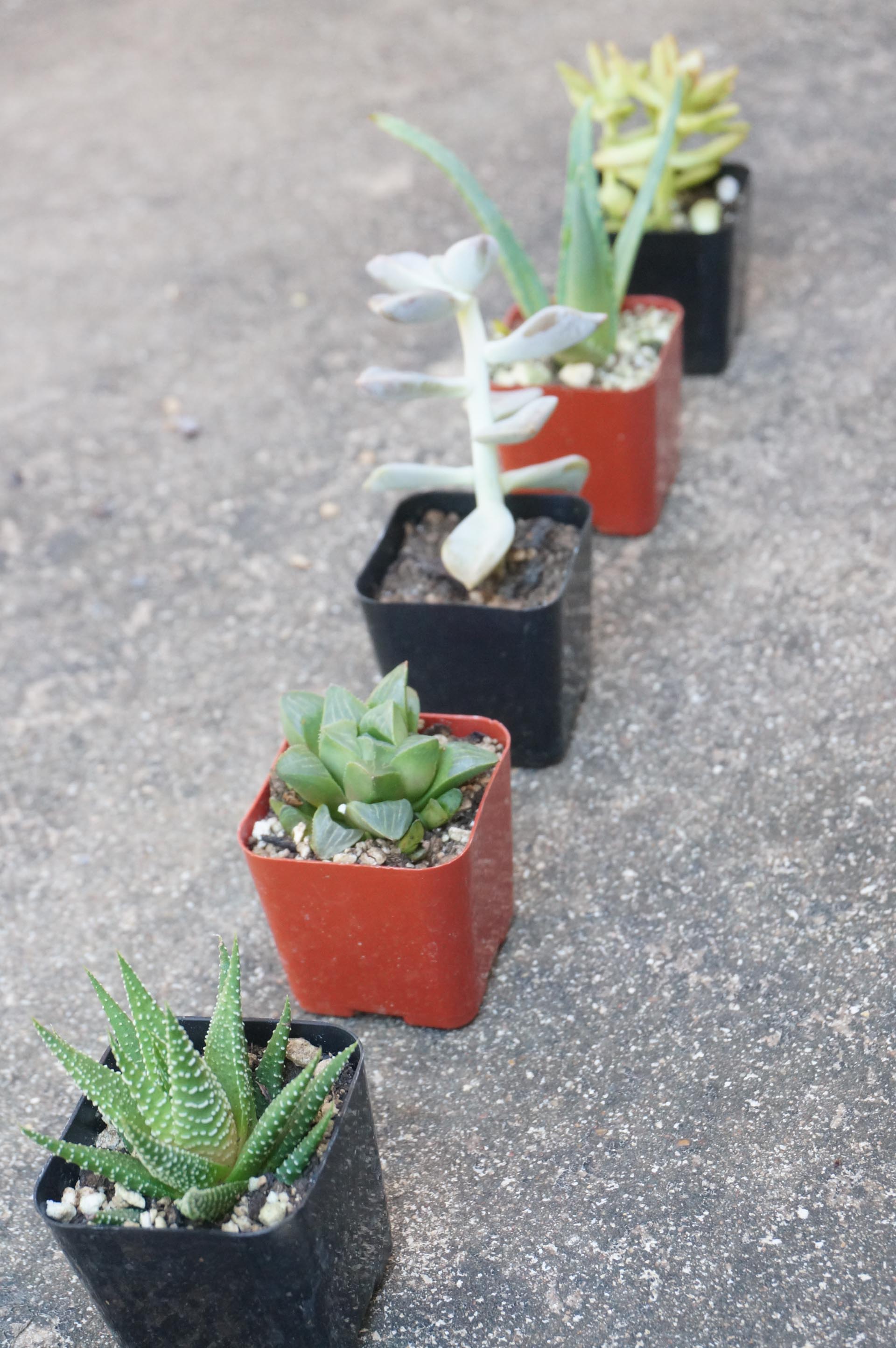
to this… (with a few more cacti at the ready, of course!) [photo from HOMEBNC]
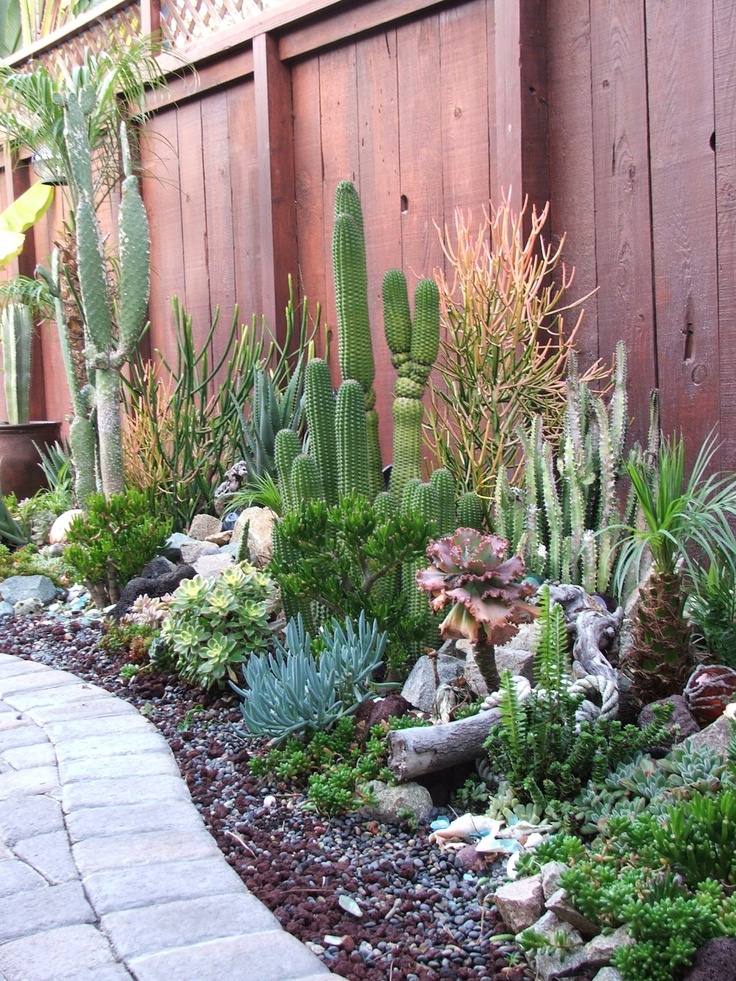
It’s important to remember that good drainage is key, so use porous soil (such as a special soil just for succulents), and make sure that there is good drainage if you plant your succulents in a pot. A drainage hole is extremely helpful in this case.
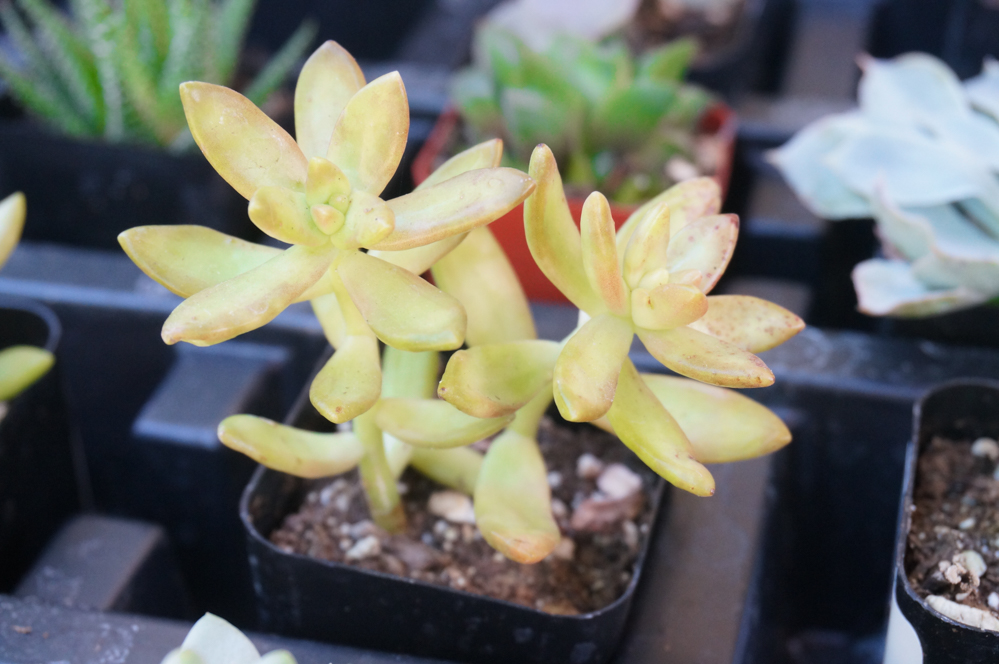
As you create the design of your garden, one strategy is to start with the main focal point, then fill in the rest of the space with your other succulent selections. As mentioned above, a range of colors, textures and heights makes a succulent garden all the more interesting. In addition to choosing succulents that grow upright, consider succulents that spill over the edge of the container (or cascade over the wall/rocks of your garden). [photo from CRUNCHHOME]

Also consider a “top dressing” such as crushed rock (shown above) for tying everything together. Last but not least don’t over-water your succulent garden. Also pay attention to signs such as shriveled leaves, which can indicate an under-watered plant. How often you water will depend on factors such as the location of your plants and the climate. Do some research, and don’t be afraid of some vigilant trial-and-error watering at first to get it just right. A little bit of time and care will help you get from this…
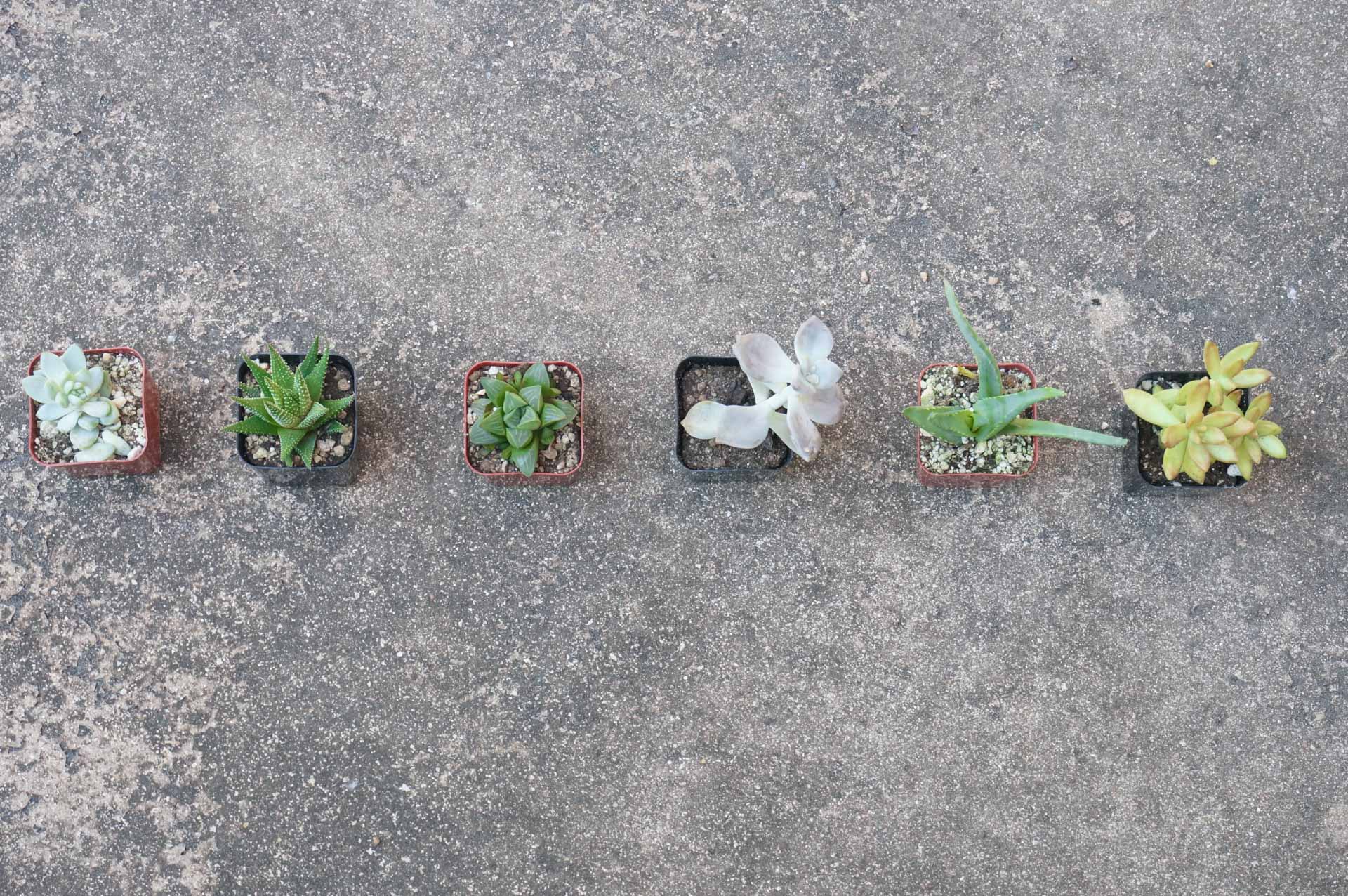
…to this!… [photo from CRUNCHHOME]
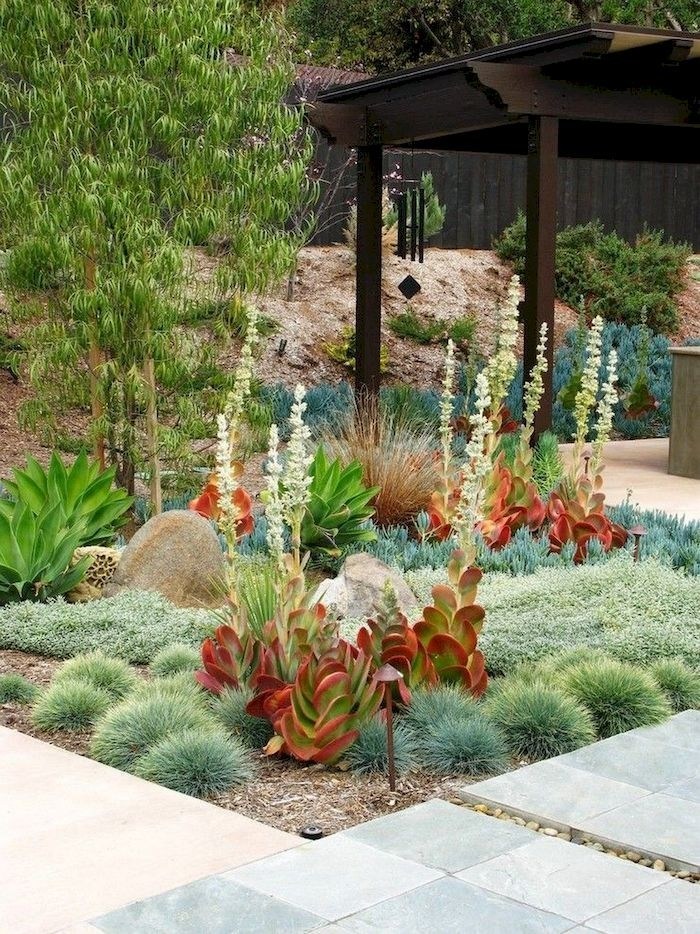
Happy planting!
You’re reading Tips for Planting a Succulent Garden, originally posted on Decoist. If you enjoyed this post, be sure to follow Decoist on Twitter, Facebook and Pinterest.
